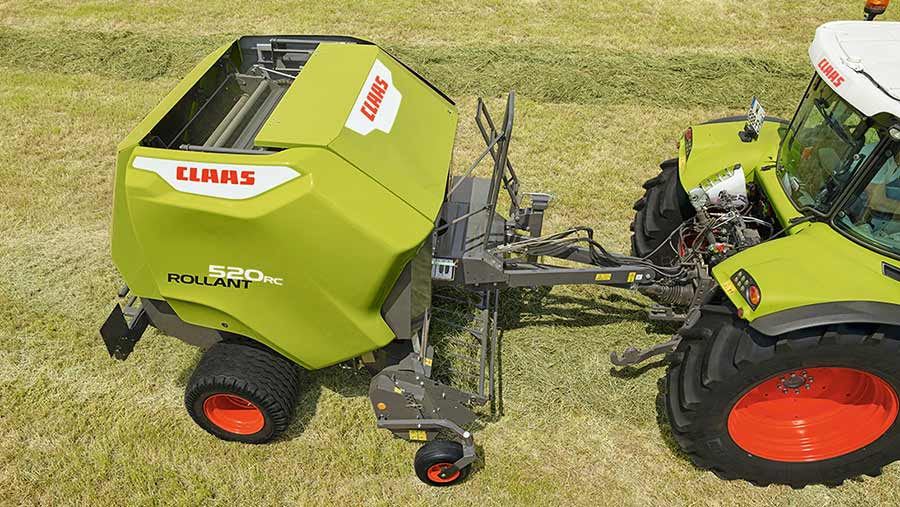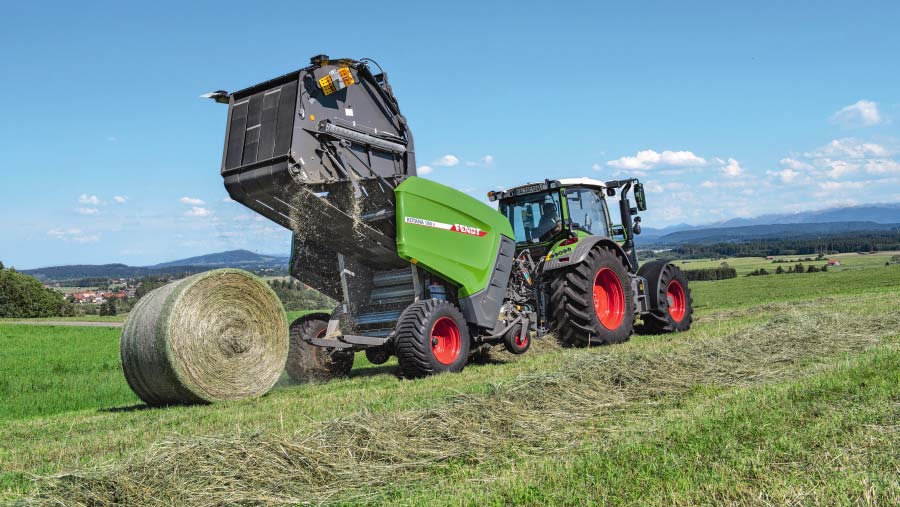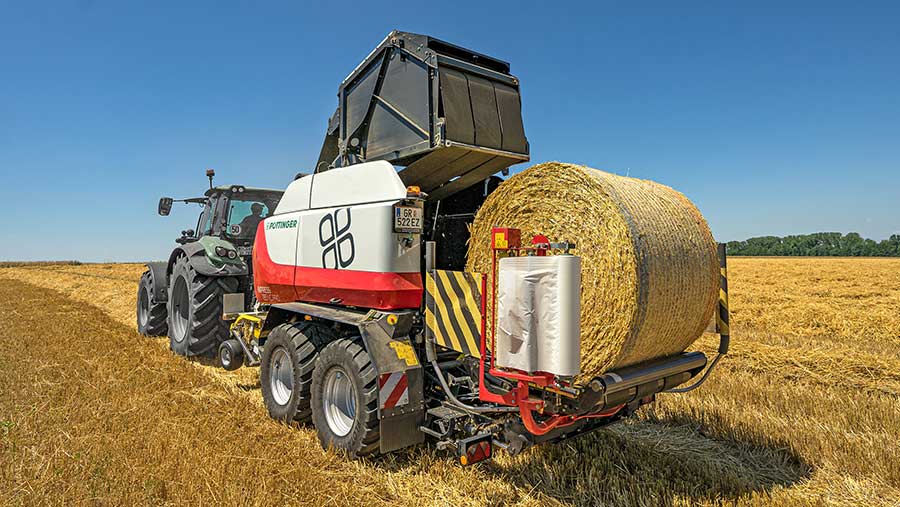Ultimate guide to buying a round baler 2020
 Claas Rollant 520 is a new entry-level baler with revamped steel roller construction © Remi Villaggi
Claas Rollant 520 is a new entry-level baler with revamped steel roller construction © Remi Villaggi New round balers from Claas and Krone, with additional models from McHale and Pöttinger, are to be found in this year’s Ultimate Guide, while Lely Welger balers have now fully transitioned to the Fendt and Massey Ferguson product lines.
Claas
The Rollant 520 steel roller baler is the new entry level model that replaces the Rollant 374 and 375 models.
See also: Ultimate guide to buying a combine 2020
The newcomer benefits from a change of roller construction, first introduced on the Rollant 540 and 620, that mounts the 16 ribbed profile rollers on stub shafts flanged to the body and can be replaced individually if necessary.
The 520 makes a 1.25m-diameter bale – a touch larger than its predecessors – with baling pressure regulated by the hydraulic cylinders that hold the tailgate section closed and open it when each bale is completed.
Download the full round baler spec table (PDF)
A rake-feed version using stub augers and underfloor tines to convey material is the base model, with Roto Feed providing more positive intake, but neither the crop-slicing Roto Cut version, nor the MPS pressure control system of pivot-mounted rollers are offered in the UK at present.
Fendt
The Fendt Rotana 180 V round balers add a bigger diameter bale option to the range, with sizes adjustable from 0.7m to 1.8m.
Bales are formed using a combination of three rollers and four belts, with extension springs providing initial layer density control before hydraulics take over for tighter outer layers.

Fendt Rotana 180 V XtraCut is an addition to the range capable of making 0.7m to 1.8m diameter bales formed by a combination of rollers and belts
Krone
Krone has simplified some elements of its baler range for the UK, dropping the non-chopping Comprima F 125 and F 155 from the line-up, while introducing the “Plus” models to replace “Xtreme” versions.
The F 155 XC Plus and its CF 155 XC baler-wrapper counterpart use three rollers and Krone’s slats-on-belts bale forming mechanism to make bales to one of six diameters, adjustable in 5cm increments between 1.25m and 1.5m.

New ‘Plus’ versions of the Krone Comprima F and V balers and their wrapping counterparts have a spiral-tine camless pick-up and numerous other upgrades
Density control is regulated by coil springs, in contrast to the hydraulic tensioning arms fitted to the 1-2.05m-diameter Comprima V 150 XC Plus baler and bale-wrapper – which are now adjustable electronically from the cab.
Up front, the “Plus” machines get a camless pick-up, with tines arranged in five spiral rows rather than straight lines for even feeding to XCut rotor and its 17 or 26 slicing blades.
Novogrip belts for the slats and sturdier chains and sprockets upgrade the bale-forming mechanism. They can apply net or film and a weighing system is a new feature for the baler-wrapper versions.
Kubota
Kubota’s range has been slimmed down, with the 25-knife version of the BV 5160 SuperCut being dropped (the 14-knife model remains), along with the equivalent BV 5200, which produces taller bales, and baler-wrapper versions of that model.
Similarly, there are baler variants in the New Holland range now that the fork-feeding Roll-Bar BR6080 has gone along with the wrapping version of the BR6090 CropCutter, which remains in baling-only form.
The Roll Baler 135 Ultra baling/wrapping combination has also gone by the wayside, as have the base-spec Roll-Belt 150 and 180 variable bale size machines with their up-and-over non-chopping intake rotor.
Pöttinger
Pöttinger also uses an “overshot” rotor for all its Impress balers, but in this case, it is available in cutting form with 16 or 32 knives in place.
Nonetheless, non-chopping versions of the 0.8m to 1.55m Impress 155 V and 0.9m to 1.85m Impress 185 V have been introduced for operators who do not want a crop-slicing facility.
In addition, a wrapping version of the 185 V Pro has been added to the line-up so that all three types and sizes of Impress baler have the combi option.

A bale wrapping version of the larger of two variable bale-size machines completes the Pöttinger Impress line-up

